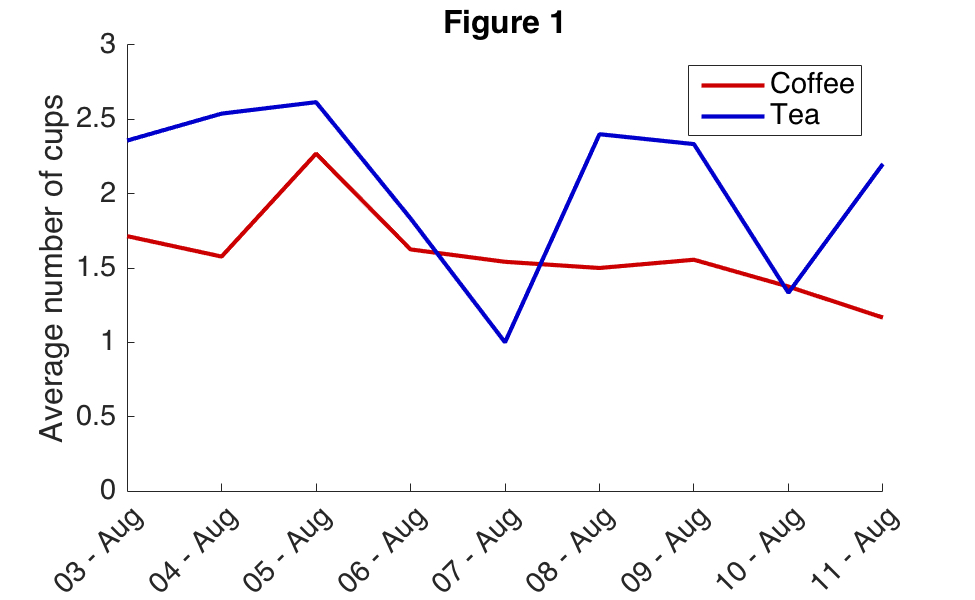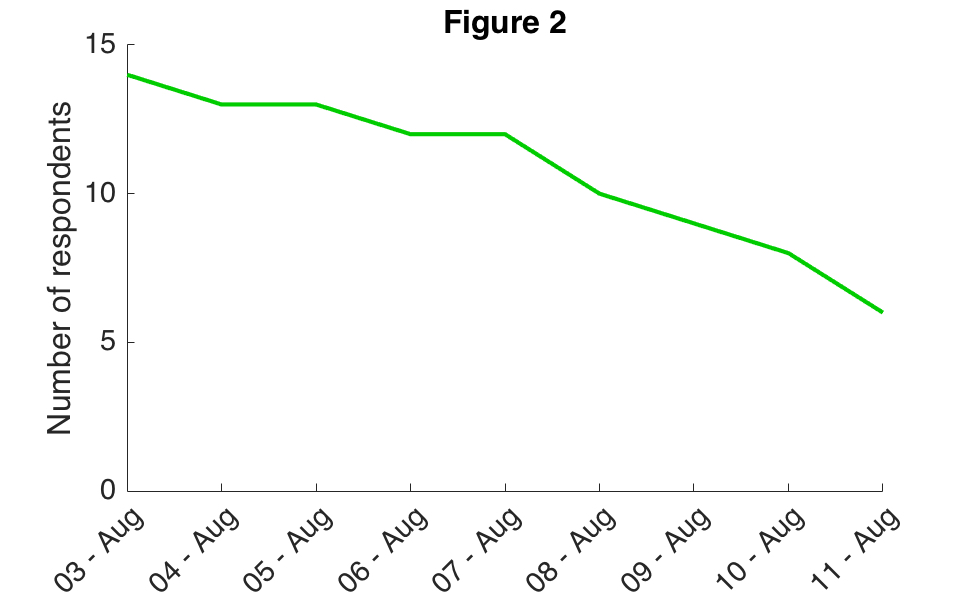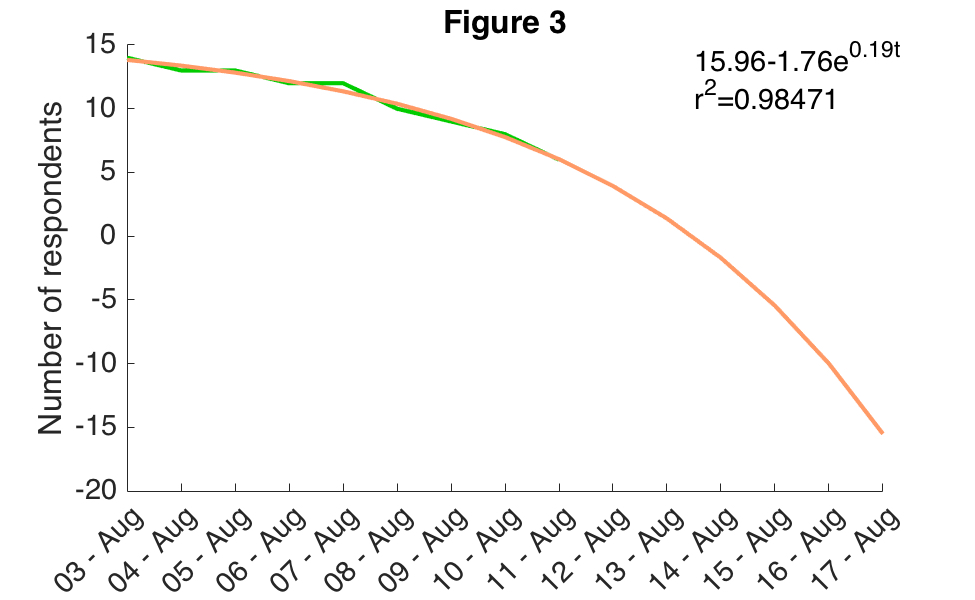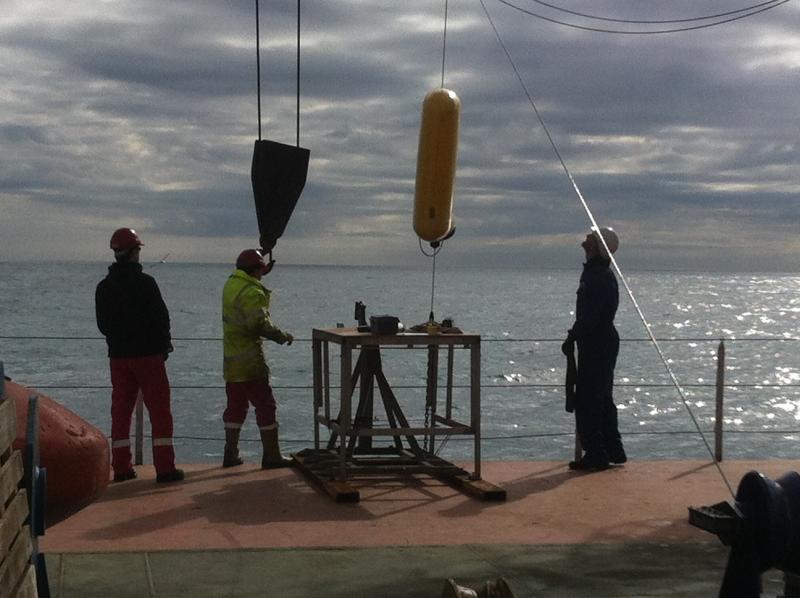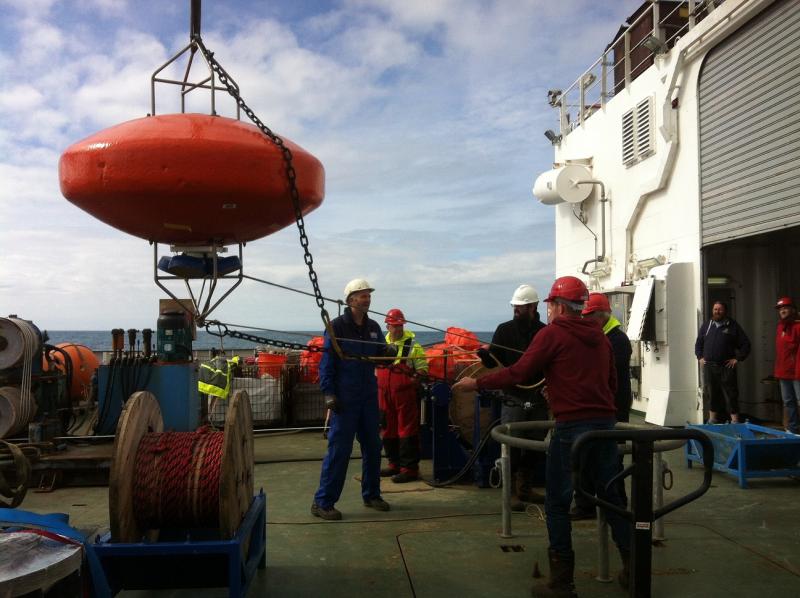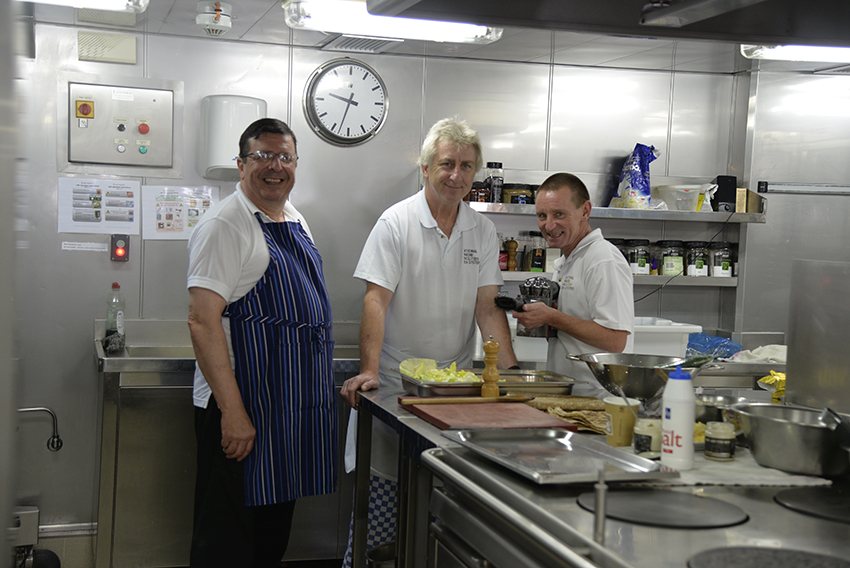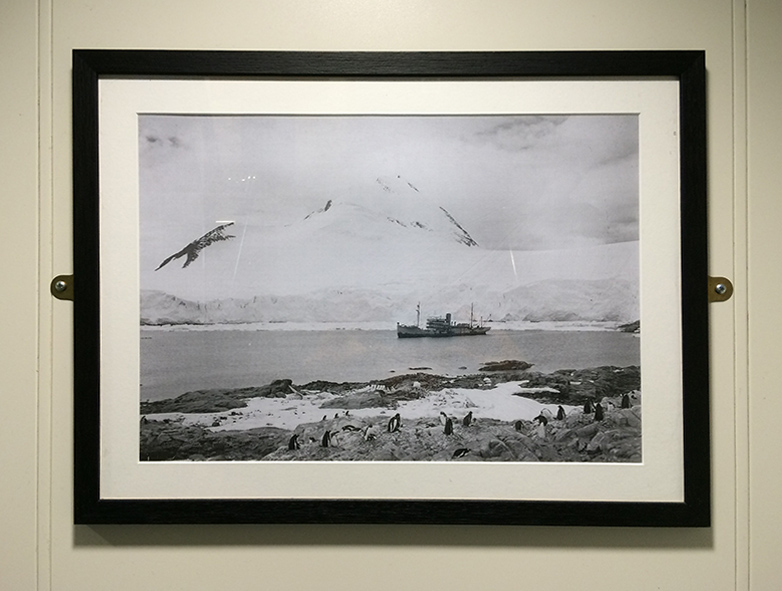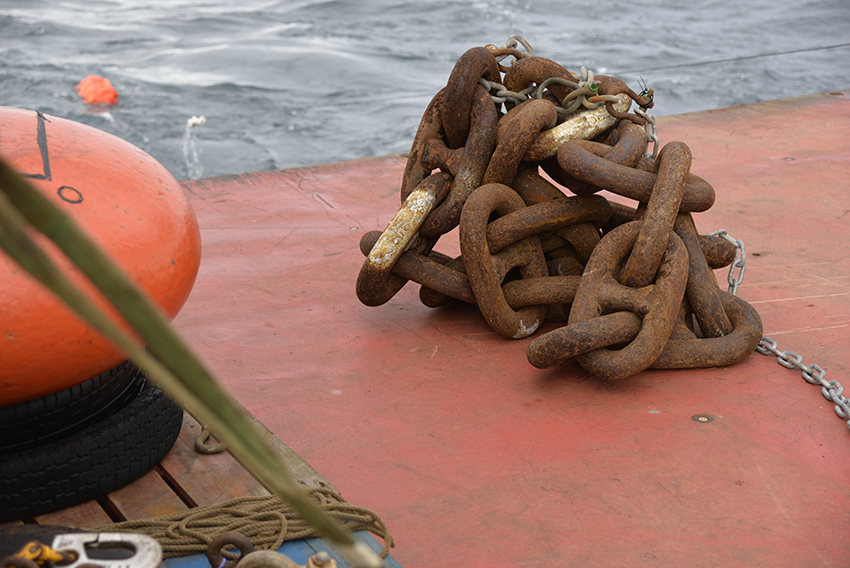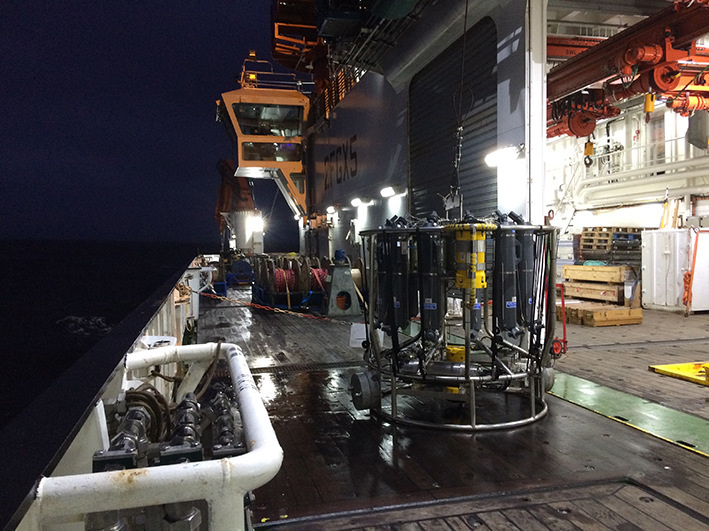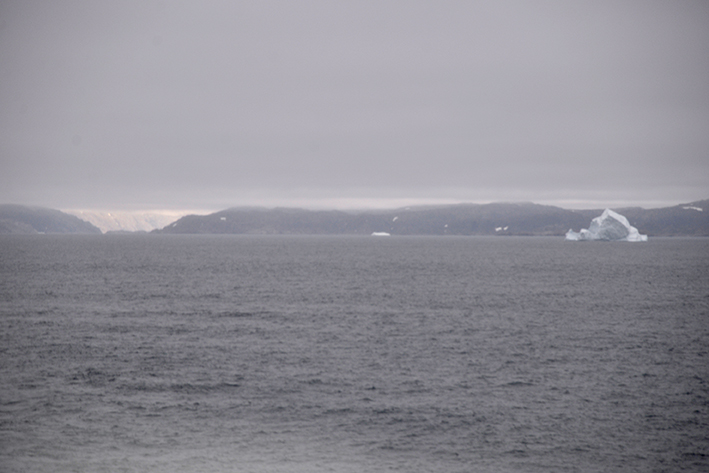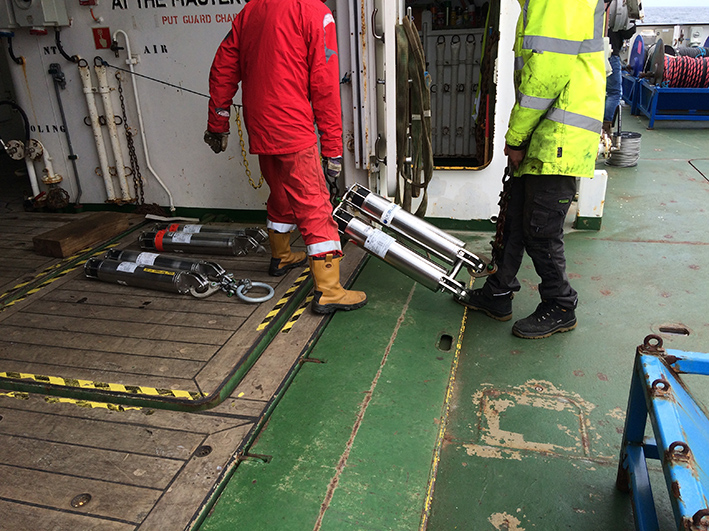OSNAP collaborators have a produced a order neurontin over the counter new paper for publication in the Bulletin of the American Meteorological Society. An early online release version of “Overturning in the Subpolar North Atlantic Program: a new international ocean observing system” is currently available on the AMS website: http://journals.ametsoc.org/doi/abs/10.1175/BAMS-D-16-0057.1
Category Archives: News
Caffeine consumption among the DY054 science team (The Great Caffeine Experiment)
by Ryan Peabody
Scientists and marine technicians have long appreciated the productivity-increasing role of caffeine [citation needed]. However, quantitative assessments of caffeine consumption and usage among the members of the DY054 science team have not yet been performed. Herein, we perform a not-quite-exhaustive nine-day analysis of tea and coffee consumption on the RRS Discovery. No significant trends were observed, other than a general preference for tea over coffee, and a sharp decrease in enthusiasm for the study as it progressed. Further work is needed to determine whether or not bush tea counts as a cup of tea, and exactly what quantity of coffee counts as a colloquial “cup.”
Data were self-reported via “marker and whiteboard,” following methods developed in Mrs. Cooper’s second grade class [Cooper et al., 1999]. Logging was originally intended to take place daily at 23:59:59 UTC, but the lead scientist occasionally felt “really over it” and data were not recorded until the following morning. Efforts were taken to ensure that subjects maintained standard patterns of caffeine consumption, though it is worth noting that several believed the study to be a contest to see which one of them could drink the most coffee.
Coffee and tea consumption demonstrate a general downward trend over the nine days, both passing a Mann-Kendall test (Figure 1). A 0.377 coefficient of cross-covariance implies that coffee and tea consumption are not related at any reasonable confidence level. Tea was consumed in generally higher quantities: on average 2.1 cups/person/day to coffee’s 1.6 cups/person/day. Further study is needed to determine if this is standard on a British flagged research vessel. Initial data supports this hypothesis: American-born members of the science team consumed 2.8 cups coffee/person/day and 1 cup tea/person/day, while British nationals consumed 1.3 cups coffee/person/day and 2.2 cups tea/person/day. The sole Hungarian-born member of the science team consumed an average of 6.1 cups of tea per day and 0 cups of coffee.
Over time, a noticeable lack of enthusiasm for the study is evident, with participation dropping from 14 initial participants on day 1 to 6 participants on day 9 (Figure 2). On a ship with 45 crew and scientists on board, this represents a drop from “low” to “very low” participation. Despite the decrease, 70% of participants reported feeling “fair” to “good” about their own caffeine consumption and the study, indicating that maybe no one was really paying attention to the study in the first place. A least-squares fit of a nonlinear model of form b(1) + b(2)*exp(b(3)*t) represents the data very well, but also indicates that it was wise to end the study on day 9 (Figure 3). If the study had continued until the scheduled arrival in Southampton, approximately -15.5 responses would be logged each day, indicating that study participants would begin to erase the previously collected data, invalidating the entire study.
Clearly, further study is needed to determine: 1) exactly how much caffeine is being consumed on board, 2) why no one wants to log their daily caffeine consumption, and 3) whether or not this was a good use of my time. Caffeine is a widely-consumed but little-studied product in the context of oceanographic research vessels, with most scientific effort going toward measurements of physical, chemical, and biological properties of the ocean. Though oceanographic research vessels are built and used primarily for the latter three areas of research, there is no apparent reason not to also study caffeine consumption.
Images by Ryan Peabody
Posted in News
On to recover an old friend
by Femke de Jong
August 2, morning:
Today we, the NIOZ team, get to recover the first mooring. This particular mooring is not really part of OSNAP, it was originally deployed in 2003 as part of the Long-term Ocean Circulation Observations or LOCO project. It has been here ever since, except for a day or two between recovery and redeployment every summer.
LOCO is located on the 3km isobath on the western side of the Irminger Sea, right underneath a meteorological feature called the Greenland Tip Jet. This enhanced barrier wind that extends over the ocean causes very strong cooling in this region in winter. It’s what causes the warmish, salty surface water to cool, increase in density, and mix with the waters below. With LOCO we have a twelve year record of that mixing and we can study how it relates to the wind forcing and general changes in the Irminger Basin. As I’m writing this we’re steaming to LOCO to recover the thirteenth year. We’re hoping this will be our lucky number. Roald and Yvo have prepared everything on deck and in the last couple of days I’ve tested all my processing scripts. We’re all ready to go.
August 4, update:
We arrived at the LOCO position at 16:00 and started the mooring recovery. Because of the long stretch of empty cable (2400 m for the profiler) it’s quite a boring recovery. Mostly some instruments to get out at the beginning and end. All was on deck around 19:30.
Roald and I have installed ourselves in the NIOZ container that was put on board before leg 1. We spend most of the rest of the day there reading out and re-programming the instruments. All of the instruments were still recording, so none of them ran out of batteries. That’s very comforting for us as this time they will go out for two years rather than one and it gives us some confidence that the estimates of how long they will run are correct. We stopped servicing at midnight to get some well-deserved rest.
Back to programming after breakfast. All the instruments had fresh batteries and programming around 10:30 so we started the mooring deployment. The anchor was dropped around 13:30. The final act consisted of a trilateration of the mooring position by ranging the distance to the anchor releases from several points around the mooring, which gives us the exact position of where we’ll find our friend in 2018. In the meantime we’ll let the instruments record some interesting things.
Photos by Femke de Jong
Posted in News
Glittering glaciers, giant anchor chain and Discoveries past
by Mia Taylor
Since reaching our first CTD station near the coast of Greenland in the early hours of Saturday morning, things have switched up a gear and work is well underway.
One of the first CTD stations was in close proximity to the southern tip of Greenland, many of us were contemplating waking up in hope of seeing Greenland’s cliffs but the ETA for reaching it was 2am, meaning that it would be dark at this time and unlikely. However, during the night the schedule shifted slightly and we reached the station closest to the coast around 5am, just as dawn was breaking. Despite lots of cloud and a grey hazy sky, the coastline was visible. We could see the flashing light from a lighthouse at Prince Christian Sound and to its left there appeared to be a glacier, further left again, a large iceberg. The glacier was intriguing, it was the brightest thing on the coastline yet with the poor visibility it was hard to understand visually; was it receding into the mountain or a layer of ice cloaking or jutting out of the cliff? No amount of squinting could clarify this for me. Most curious was that it was sparkling, as if it was covered with a gentle sprinkling of glitter.
Yesterday – Sunday – the moorings began; M1 and M2 were recovered, having been underwater and actively collecting data for the past year. This is the first time OSNAP have returned to the moorings since they were deployed so bringing them to the surface and retrieving their data was an exciting prospect, as was seeing their condition for the first time since spending a year beneath sea level. Recovering the moorings requires hauling them out of the ocean and removing and cataloguing the instruments. It’s heavy work and it’s cold out, plus due to the high pressure in the area the waves are rolling with more swell than the last couple of days, but the NMFS technicians who are organising the operation have the process efficiently choreographed and everything ran smoothly. Once all of the M1 and M2 2015-16 moorings were out of the water (all of which were fine, with the addition of some biology to a few buoys) a reconditioned set were ready to go back in. If you are not familiar with what these mooring’s are, let me try and explain: one mooring includes groupings of about four buoys incrementally attached along a long line of wire and between these groupings data collecting instruments are further attached.
Many of these instruments look cylindrical and are made from a combination of metals to prevent corrosion. The wire is long – M1 was 2059m in length – at the end of the wire a heavy weight is attached, which is designed to sink to the seabed pulling the wire and the buoys down with it so the line and buoys float vertically upwards, securing the instruments for data collection at
different depths. When it’s time for the mooring to return to the surface for data collection an acoustic release mechanism triggers the wire to detach from the weight and due to its buoyancy the mooring floats back up to the surface. M1, M2 and now M3 reached the surface intact and untangled making it easier for a technician to catch it and draw it back to the ship.
To successfully drag down the buoys the weight needs to be significant, for the redeployed M1 and M2 moorings a small part of a massive anchor chain had been chosen, to give an idea of its scale, each chain link is about the width of my forearm. It made a dramatic sight when held aloft by the winch and hanging between the gantries before it was dropped to its watery grave.
In the evening, having completed work at moorings M1 and M2 the ship headed back closer to Greenland for more CTD stations and the launching of a number of RAFOS floats. Sotiria and Ryan – who are on the 12am – 12pm watch – and the technicians spent the early hours consistently busy preparing the CTD, collecting water samples for salinity and nutrient analyses and recording details for the watch log. Although it is the middle of the night, it’s a nice time to be up and about. It’s more peaceful and the pitch black of the night sky against the bright lights of the ship sets an atmospheric scene. Even though it’s not possible to see the vast expanse of water around us at that time, you can definitely feel it. As dawn breaks (around 5am), wandering up the outside stairwells it seems there is always someone to run into who is starting their day.
Punctuating the work and giving structure to the day are mealtimes; the food is fantastic and includes more options than could possibly be eaten at one sitting. Should it be possible to lose sight of what day it is (I think it is possible), the meals offer each day a sense of identity; fish on Friday and today, Sunday, we had a roast dinner (with amazing spuds). The galley is indicative of how things seem to run on the Discovery as a whole; the standards are high and everyone is friendly. As a first-timer on a ship it’s crystal clear that everyone works very hard and that things run like a well-oiled machine. Everyone is doing different shifts so there is always someone awake and alert; it’s a 24hour ship in every respect. Options for downtime apart from socialising or having the sea rock you to sleep, include a session at the gym, playing cards or Wii, watching a video, or a number of other things, including perusing from library’s collection. One of its gems is ‘A century of Discovery’, charting some of the Discovery’s past voyages from the last few hundred years. Interesting fact: Captain Cooks ship, The HM Sloop Discovery, weighed 229 tons*, compare that to the 2012 RRS Discovery, which weighs around 6000 tons. The sense of history attached to the Discovery is inescapable here as photographs and prints of ships bearing the ‘Discovery’ name are hung on the walls of each deck, and show majestic looking ships alongside explorers, ice and penguins. It is a profound reminder of the ships heritage and that the vessel and its people are integral cogs in continuing its legacy of exploration and pioneering research, enabling new knowledge to inform our lives.
Other excitement on board today included Ian, the purser, opening the bond (theship’s shop) where you can buy chocolate, sweets, cigarettes, clothing bearing the ‘Discovery’ logo and more, within minutes of opening there is queue. More exciting again (if possible), this morning we saw a group of pilot whales to the side of the ship. They didn’t hang around but hopefully they will be back.
* Ships employed in Arctic ice: Discoverys past, 1602 to 1876 by Ann Savours, Archives of Natural History, 2005, A century of Discovery, Volume 32 Part 2
Photos by Mia Taylor
The next stage of the OSNAP 2016 fieldwork
by Penny Holliday
RRS Discovery cruise today left Reykjavik on what surely must be the most beautiful day of the year so far. Sailing into glaring sunshine over blue sparkly water brings a optimistic lift to the heart of this Principal Scientist – it almost makes you think that we won’t need all of those extra days we have scheduled in case of delays due to bad weather… But the bad weather will probably come at some point, so I wont yet get too carried away with talking about calm conditions.
Most of us have spent a few days in Reykjavik, getting excited by seeing four research vessels in port at the same time (surely quite unusual?), gasping at the price of shopping, and admiring this stylish city in all it’s crazy-weather glory. But now we are glad to be getting going and getting on with the task ahead of us.
This cruise DY054 is the second UK OSNAP mooring refurbishment cruise of 2016. We’ll be retrieving some moorings and instruments that have been collecting deep ocean data for the past year, and sending a new lot of instruments back to replace them. We’ll also be releasing some ocean-exploring robots – floats that will spend two years following the coldest and deepest water so we can trace the many ribbons of currents that make up the southward-flowing circulation.
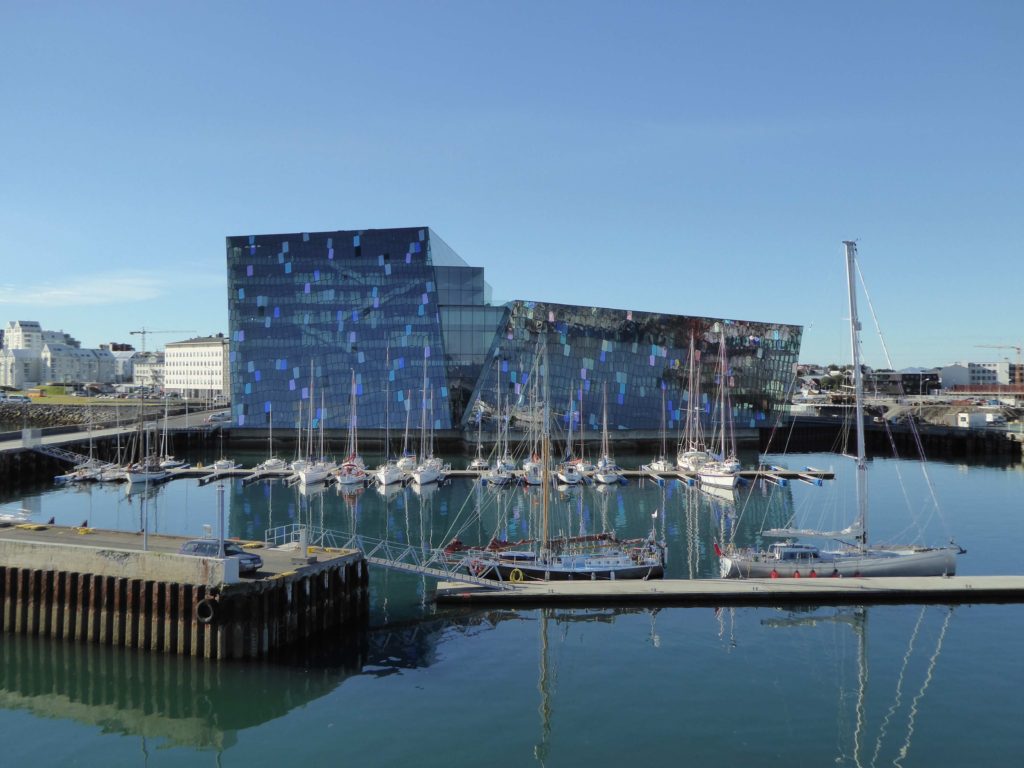
Reykjvik
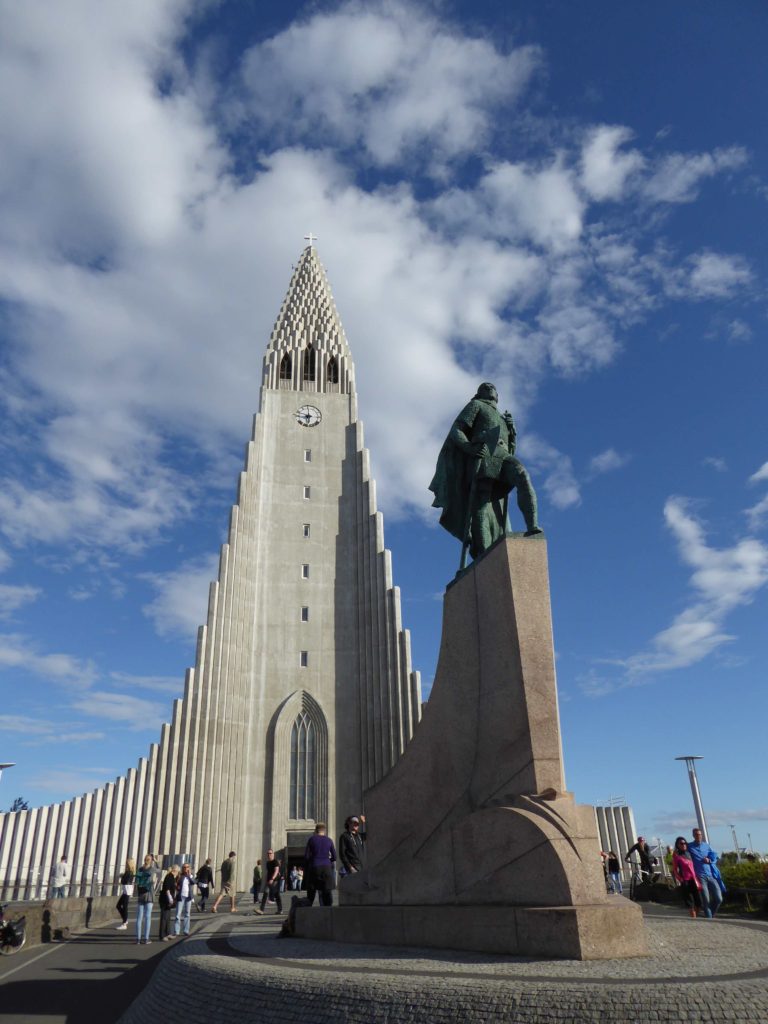
Reykjavik
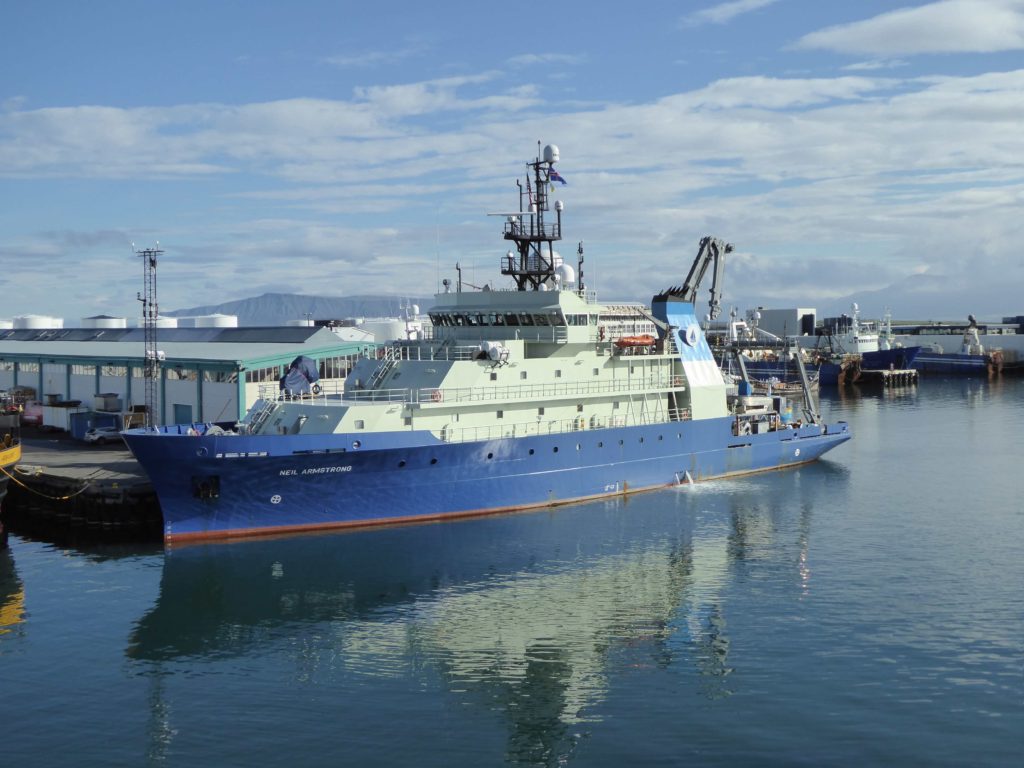
R.V. Neil Armstrong
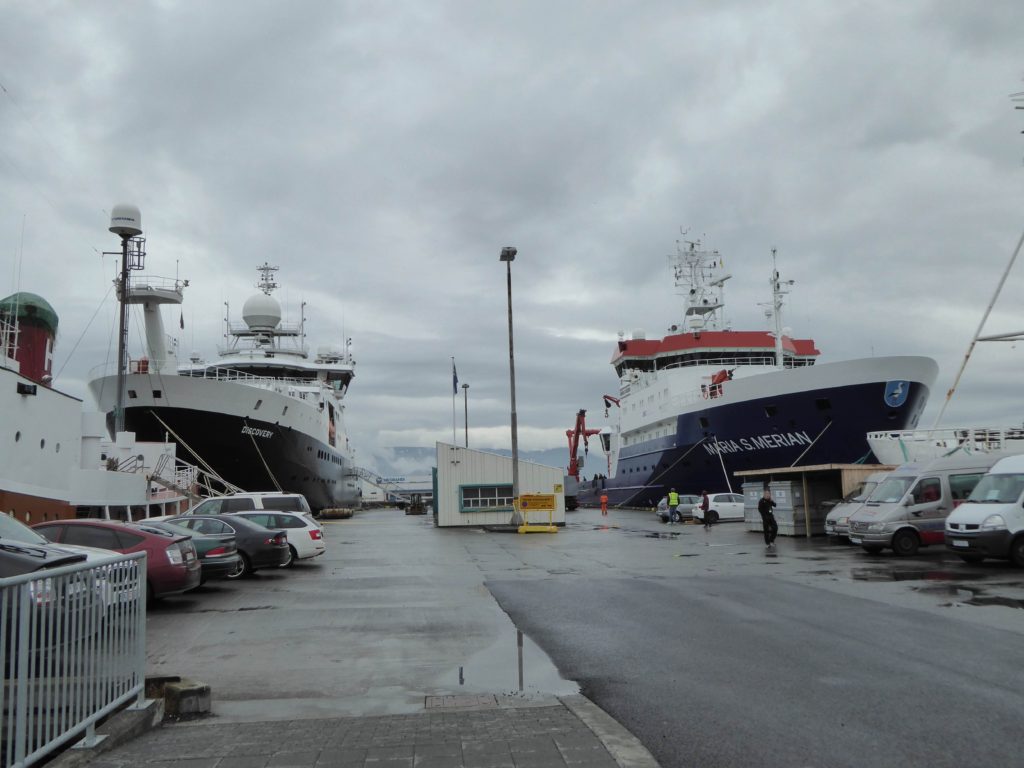
RRS Discovery and RV Maria S Merian
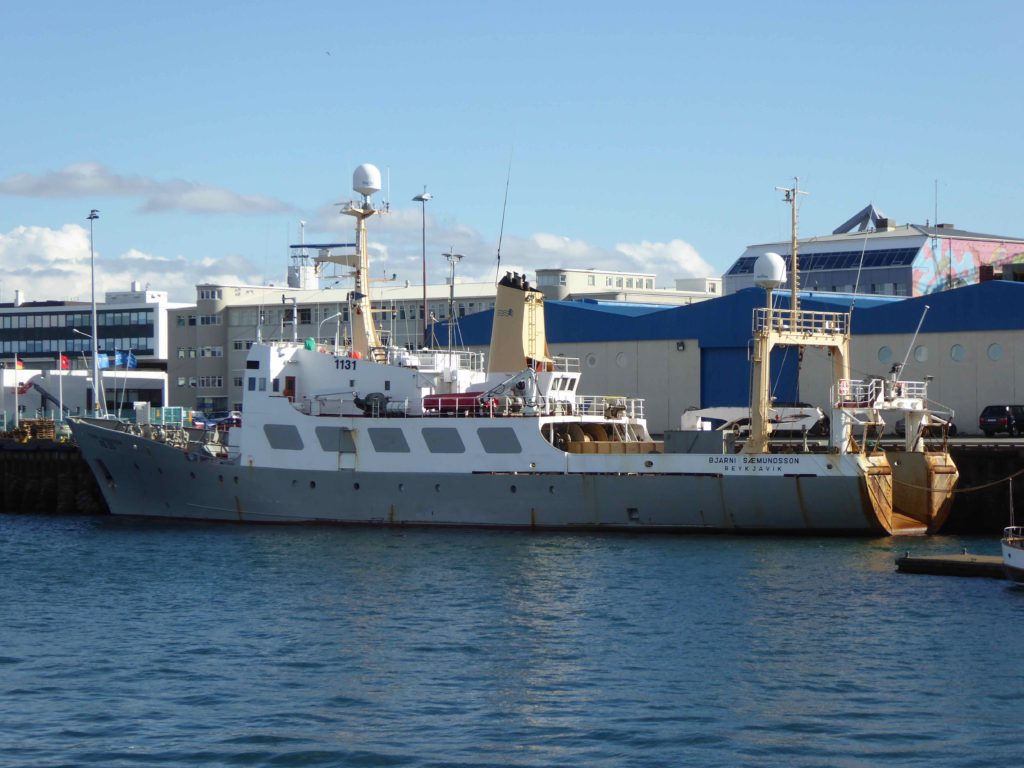
RV Bjarni Saemundsson
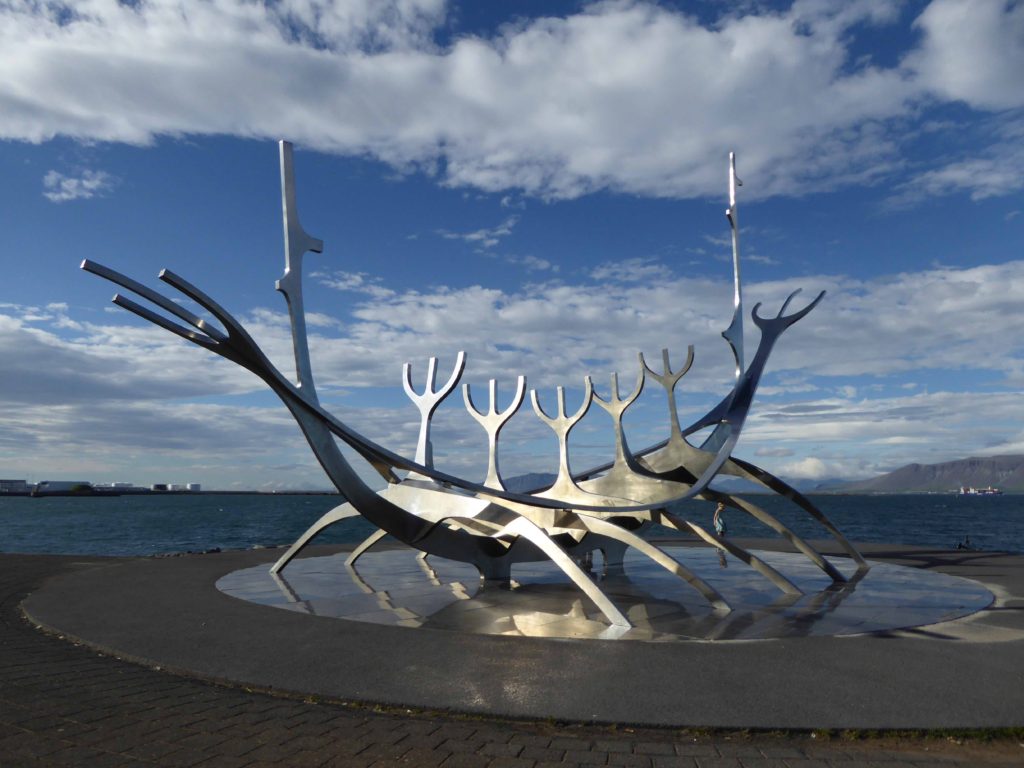
Reykjavik
Photos by Penny Holliday
Before the game starts
by Feili Li
It has been two days since we left Reykjavik and we are heading southwestward to the Irminger Sea, east of Greenland. It will take about another day before we reach the location of the first CTD station near the Greenland side. So before we get there, let me explain several things: who we are, why we are in the cold subpolar area, and what we are doing before getting to the working site.
We are a group of enthusiastic hard-working researchers coming from seven institutions and four countries on a research cruise aboard RRS Discovery. Here the word “researcher” is preferable to “scientist” because we have an artist Mia and a photographer Amanda onboard – we are all doing research, just in diverse disciplines. (If you are as interested in their work on the cruise as I am, stay tuned to our blog!) Below are some nice photos of us.
One of the main goals of this research cruise is to retrieve data (sea water temperature, salinity, and current velocity) from the moored array as part of OSNAP, which has been sitting in the Irminger basin for another full year. After the data retrieval, moorings will be redeployed and will be staying in the water for the next two years. Processing of the data will begin shortly after they have been collected, although it may take several months to finish the processing and quality control of all these data. With the data, we are one step further towards the first result about the overturning circulation in the subpolar North Atlantic. It will provide unprecedented opportunities for understanding how water masses formed at high latitudes are tied to large scale Atlantic circulation that relates to climate change and variability.
Before getting to the site, we are generally free. I feel like I have moved my office from Durham in North Carolina to the ship. Except for training on CTD watch, I have been basically working on my laptop in a lab with a nice ocean view. The boundary between work and life disappears: eat, tea, work, eat, tea, work, eat, eat, eat … Yes, the boundary between the times you are eating and the times you are not eating also disappears. But, soon, this will be substituted with days filled with lifting, walking, taking water samples, and that is when the real game starts.
Photos credit: Neill Mackay
Posted in News
New research published by Femke de Jong and Laura de Steur
press release
A new record in mixing of surface and deep ocean water in the Irminger Sea has important consequences for the Atlantic overturning circulation
Scientists Femke de Jong and Laura de Steur of the NIOZ Royal Netherlands Institute for Sea Research have shown that the recent temperature changes in the Irminger Sea between Iceland and Greenland can be explained through regional ocean-atmosphere interaction during the cold winter of 2014-2015. This rejects a hypothesis that posed that increased meltwater from Greenland weakened deep water formation and caused the cold blob. The article by de Jong and de Steur is accepted by Geophysical Research letters and has appeared online.
Posted in News
CTD special
by Nora Fried and Patricia Handmann
Today this blog is focusing on one of the central Instruments of almost all oceanographic cruises: the CTD – Conductivity-Temperature-Depth sensor. One of the interests in oceanography is on the physical, chemical and biological properties of seawater. Most oft the work on board is accumulated around the CTD schedule. The CTD we use on this cruise went on around 70 dives until now, but what exactly is a CTD?
A CTD-rosette consists of a metal cage with a centrally installed sensor pack – the CTD. These sensors are measuring conductivity, temperature and pressure in real time being consistently pumped while passing through the water column. Salinity can be computed from conductivity, temperature and pressure. The maximum depth this instrument can resist is around 6000m. Since our cruise is passing through Labrador and Irminger Sea our deepest station until now is around 3800m deep.
Furthermore there are up to 24 Nisken water sampler bottles, which can hold up to 12 liter of seawater and bring them up to the surface. Additionally to the CTD sensors and the water sampler bottles we installed some more sensors on the CTD this cruise: we measure oxygen concentration, fluorescence, velocity of the surrounding water, distance to the bottom light penetration depth and the turbidity.
The whole CTD-rosette is mounted on a wire, which is connected to the vessels winch system to veer out the instrument into the water and heave it back to the deck. The wire is a cable at the same time and makes real time data transmission from the sensors to a computer on board possible. So temperature, salinity and pressure of the surroundings can be monitored the whole time.
Once a CTD Station is reached and the instrument is prepared the rosette can be deployed. Before deploying the bridge has to approve of the action, then the winch driver is informed by the CTD watch that the instrument can be deployed. The instrument is then veered out with a velocity of around one meter per second – so the CTD watch has to observe the altimeter and all the other instruments the whole time in order not to hit the ground.
Due to different properties of seawater in different depths, density oft the surrounding water is changing and the CTD is drifting with the currents – the pressure is different to the length oft the veered out rope. Therefore the winch is stopped at a depth of 10 to 15 meters to the ground in order not to hit the ground with the sensors. Once the instrument has reached the full depth the first water sampler is closed and the instrument is heaved back up to the surface and the sampler bottles are closed on different depths by the CTD watch.
Once the Instrument is back on deck, secured by ropes and washed, the work of the chemists and biologists starts. They take oxygen and nutrient samples and are the firsts to touch the sample bottles. When all samples are taken its time for the CTD watch to take salt samples – therefore sample bottles are filled and measured by a salinometer. Measuring the same properties with different measuring techniques can reduce the overall error.
Depending on the water depth the duration of a CTD cast can vary greatly. A station takes particularly long time if calibration or testing of additionally installed instruments is performed on the CTD rosette. Especially instruments that will be deployed on multi-year moorings need to be tested and calibrated before final deployment. Little CTD Systems called MicroCats are tested as described above. MicroCats measure temperature, conductivity and pressure just like the system installed on the rosette. In order to mount them on the rosette some sample bottles from the rosette are replaced by the MicroCats, and the CTD profiles of the rosette system gets compared to the Microcat profiles to calibrate after the cast. In order to get good calibration values, bottles are closed at five different depths with preferably constant salinity and temperature during the up-cast. For these depths the CTD is stopped for five minutes. Salinity of the sample bottles is determined by a salinometer and compared to the MicroCats-data afterwards. Moreover, the releasers of a mooring have to be tested for reliability before deployment. The releasers are activated by a specific hydrophone signal. These tests are essential to be able to recover the moorings with all the instruments after multiple years. Though a calibration-CTD takes longer, it provides some diversion during a CTD-watch and all in all we like our ‘Micro-Cats’.
In order to run the CTD around the clock, we are working in shifts of 4 hours at a time. At midnight the middle watch begins during which, one usually has some peace and quiet as most people on the ship are sleeping. To be regularly on deck at 2 a.m. and watch snowfall at night or the bright summer night sky at the Greenland coast is also an advantage of this shift.
A notably nice shift follows from 4 a.m. to 8 a.m. when sun is rising. A sunrise can be impressively beautiful at sea, appearing different every morning.
The 4 to 8 shift is then replaced by the so-called retirement shift from 8 a.m to 12 a.m. This shift is very close to a normal day.
Three to four students take care of the CTD during their watch time. This watch system is kept during the whole cruise and can make one sleep a lot during daytime. Also an ostrich steak with asparagus can happen to be your breakfast.
We already had rough weather during this cruise: nearly 7 meters of waves and around 34 kn of wind brought adventures like sliding through the CTD lab on a chair or not secured things on waltz to our trip. Even through these kinds of weather conditions the Maria S. Merian is able to perform CTD casts in a safe way. The sailors and the bridge show special skills and repeatedly perform extraordinary in order to bring the CTD-rosette back to deck without harming it.
Sometimes it also happens that something goes wrong during a CTD-station – Sensors stop working or seawater finds its way entering plugs or cables. Then it is time for error analysis by our CTD technicians. As soon as the CTD-rosette arrives on deck the troubleshooting starts.
Up until now we have had a successful and smooth cruise and hope to continue that way until Reykjavik.
Very hearty greetings from the dog watch der MSM54
Posted in News
Thursday 12.05. – Saturday 14.05.16
by Amelie Klein
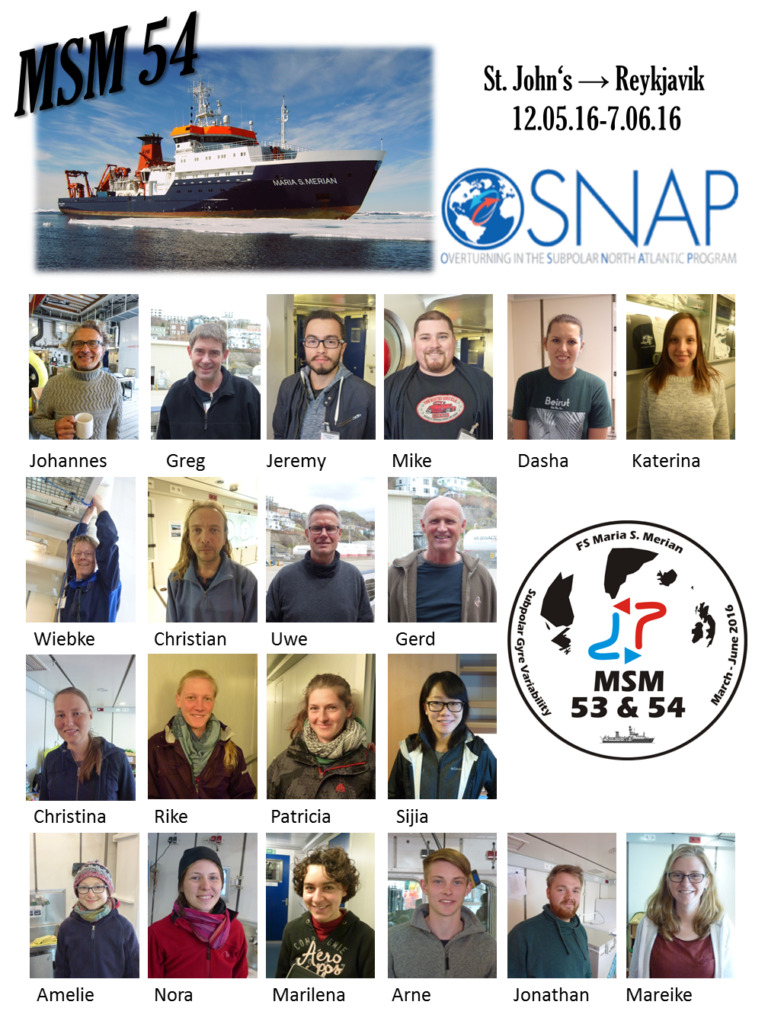
After some small highlights like supposed explosives in Mareike’s notebook and an unexpected upgrade to Premium Economy for some of us, we arrived at St. John’s. Thanks to the early flight an the time shift we had enough time to discover the town of St. John’s after the check in in the hotel where we stayed during the first night.
First of all, we said hello at the Merian and went on a small (and quite windy) tour to Signal Hill, from which you have a great view over the harbor and which became popular as Marconi received the first transatlantic radio signal here in 1901. In the evening we went to the city center and enjoyed dinner in a nice Canadian restaurant. The colorful houses and open-minded and witty people make up the great flair of St. John’s.
On Thursday we moved into our cabins at the Merian, which will be our home for the next weeks. After last preparations for the
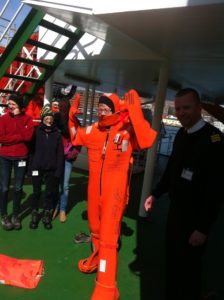
Wiebke clothed in a survival suit
(Photograph by Johannes Karstensen)
cruise and refueling there was the official welcoming by the crew and the security instructions. In the afternoon the Maria S. Merian then left the harbor and after the successfully mastered security exercises during which the most of us entered a rescue boat for the first time, we were introduced to our tasks on the ship. In the evening the first CTD measurement was carried out.
The next day was transit to the next station an actually for most of us this day (Friday) can be summed up in two words: Sea sick or tired due to the anti-sickness pills.
Saturday morning most guys had recovered and after breakfast we spotted the first icebergs, becoming bigger and more the farther we traveled on.
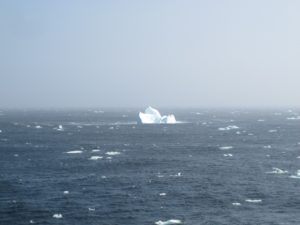
The first icebergs (Photographs: Nora Fried)
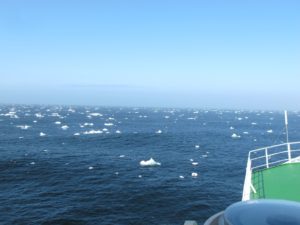
The first icebergs (Photographs: Nora Fried)
Posted in News
OSNAP at EGU 2016
Session OS1.4 The North Atlantic: natural variability and global change
Tuesday (08:00-19:30)
Laura de Steur and Femke de Jong
EGU2016-9380
Variability in the Irminger Sea: new results from continuous ocean measurements between 2014-2015
Helen Pillar, Patrick Heimbach, Helen Johnson and David Marshall
EGU2016-13947
Dynamical Attribution of Recent Variability in Atlantic Overturning
Posted in News
